Who Is Tim Rönning?
Tim Rönning is a 22-year-old Swedish goalkeeper currently playing for Elfsborg in the Swedish Allsvenskan.
He is valued at £810,000 by Transfermarkt.
Rönning is instantly striking given his frame.
The Swede stands at 2.01m | 6’7”, and whilst he has the lean physique of a 22-year-old, yet to fully fill out this frame, he is nevertheless strong, as you’d imagine for a player of his height.
Rönning has caught the eye this season at Elfsborg, keeping 12 clean sheets in all competitions.
Elfsborg managed 55 points domestically, yet their expected points was just 45.1 points, the biggest expected point differential in the league.
Whilst this undoubtedly comes down to their goalscoring, it also comes down to the performance of their goalkeeper who outperformed his xG against by three goals — a stellar return.
He is the youngest starting goalkeeper in the league too, and whilst he is yet to earn a call-up to the international side, Rönning is nevertheless a player who clearly has a bright future ahead of him.
This tactical analysis and Tim Rönning scout report will provide an analysis of Rönning’s strengths and areas for development, whilst also pointing out how he is used in Elfsborg’s tactics in possession and what kind of team he’s most likely to fit into in the future.
Tim Rönning Style Of Play and & Player Profile
Unsurprisingly, given Rönning’s height, he is particularly good at stopping anything directed towards the upper half of the goal.
Rönning regularly tips shots aimed towards his top corners away from goal and can even get to these, at times, with both hands.
Technically, he is proficient in this area, reaching for the ball with his top hand when diving one way to make a stop.
We can see this in the first image where he tips the ball over the bar as he dives to his left.
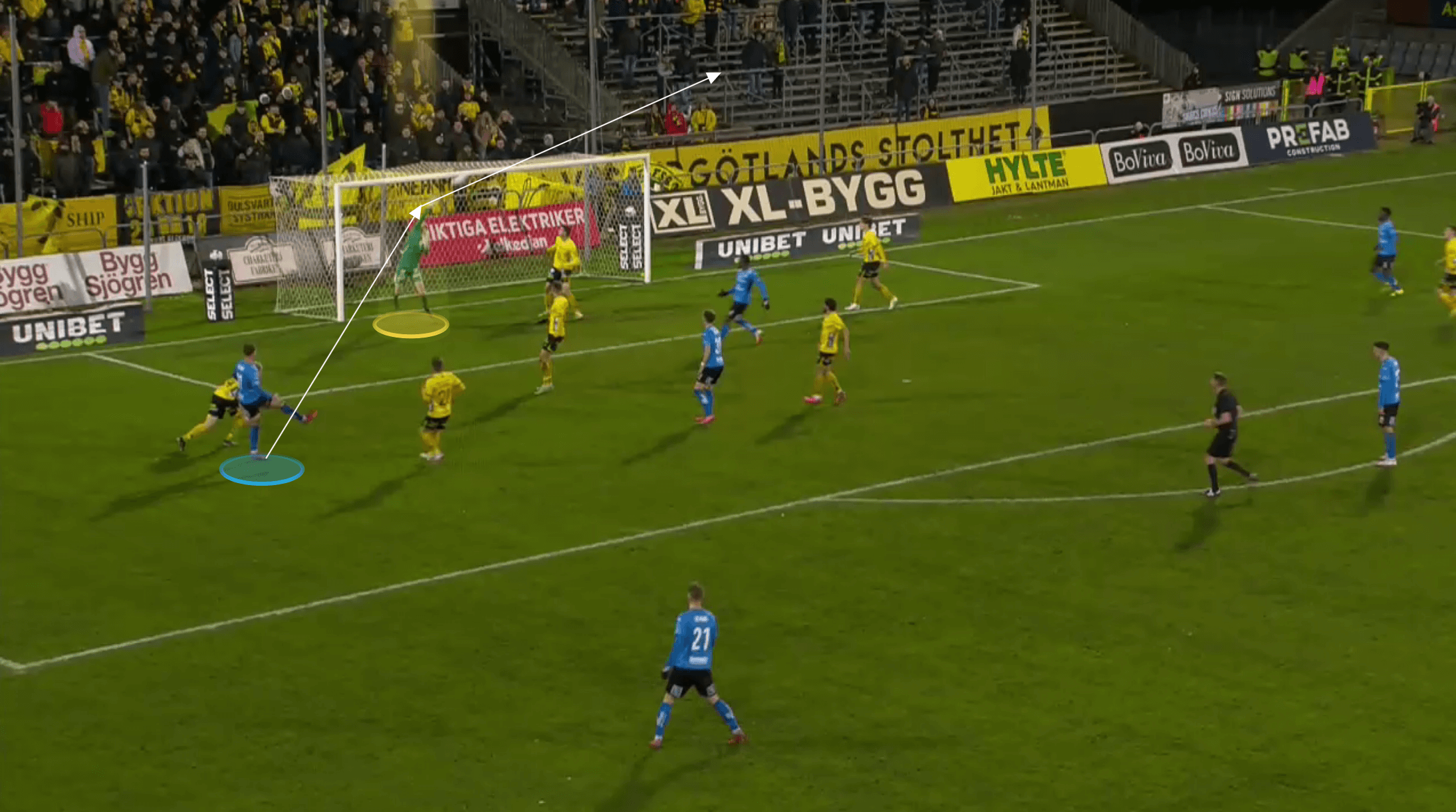
A common feature through many of Rönning’s saves is his strong hands.
He is not only able to tip shots away with one hand but will regularly completely alter the direction of the ball.
He is able to generate this power from setting himself and timing his save to reach the ball at the peak of this movement, using the power generated from his lower body to push the ball away with his leading hand.
One area that modern goalkeeping is having to adjust to is the shot towards the front post top corner from close range.
When in a 1v1, or when a striker has the ball within 12 yards and they are positioned heavily towards the side of the goal, the angle towards the back post is reduced greatly.
As such, many forwards are opting to strike the ball towards that top corner on the near side.
Many keepers will already be crouched low, ready to explode to either side to stop a shot towards the bottom corners, and this positioning makes it difficult for them to react to such a shot directed towards the closest top corner.
As the distance is much shorter than it is to the far corner and this kind of shot isn’t placed, but rather hit with significant power, the reaction time is much less than if they were to dive to their far corner.
Forwards around the globe have been gaining success with this, but one of the advantages of a tall keeper, particularly one who is as strong a shot-stopper as Rönning, is that they are able to deal with this better.
Rönning has shown he can react to such a shot and still tip the ball over the bar, which we can see in the following image from the recent 3-2 win over Örebro.
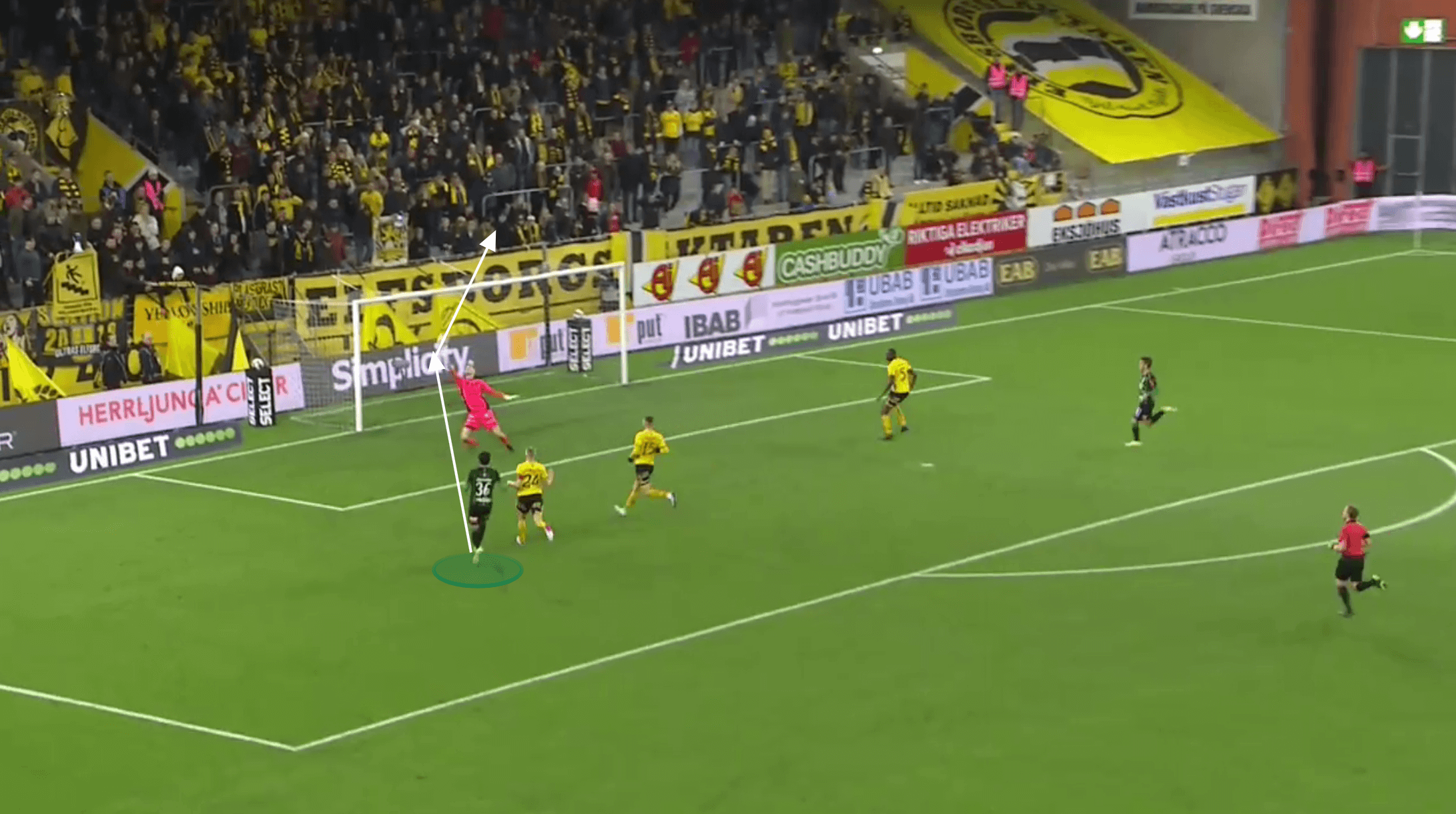
Rönning covers his goal well, and whilst he gets to a lot of shots, he parries plenty, rather than taking catches.
When parrying, he doesn’t always push the ball away from goal or around the post.
In fact, he can have issues with some of the direction of his parries.
He has a slight tendency to push the ball back into a dangerous area, focusing so much on reaching the ball and stopping the shot that he doesn’t think about the placement of the parry.
Naturally, this leads to second opportunities.
He’s a good shot-stopper and has a good reaction time, but Rönning isn’t overly explosive; he doesn’t regain his position and ready himself to block the second shot quick enough.
The following image shows Rönning stopping a shot destined for his top corner but instead of pushing the ball away from goal, he inadvertently places it back into the path of the onrushing forwards, readying themselves to pounce on the rebound.
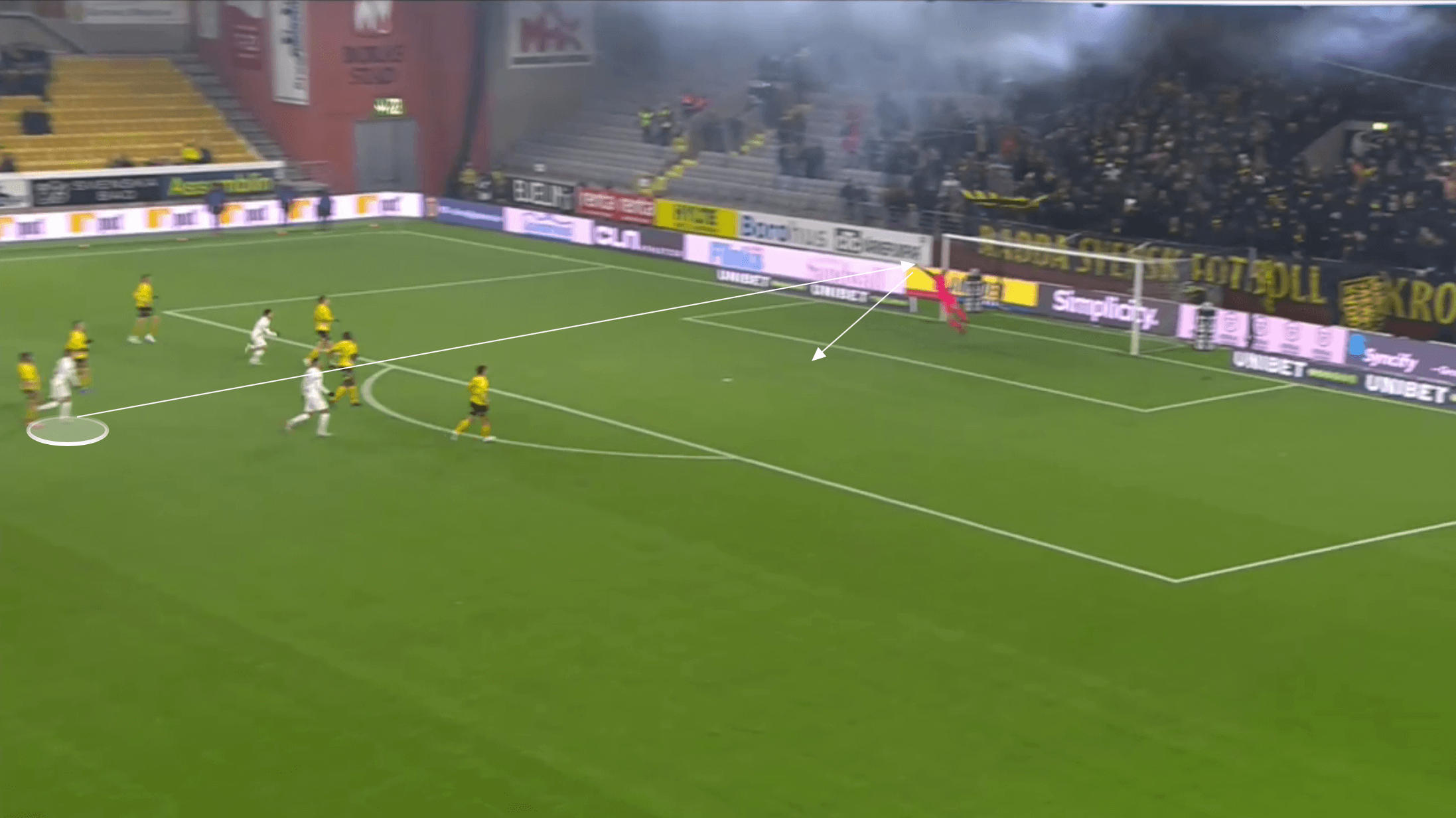
A similar example can also be seen in the next image.
Despite showing quality to get down to his nearside to stop the low shot, he once more pushes the ball into a dangerous area around the six-yard box.
This isn’t a common occurrence from the Swedish keeper, but it is nevertheless, an area of his game that needs attention and development.
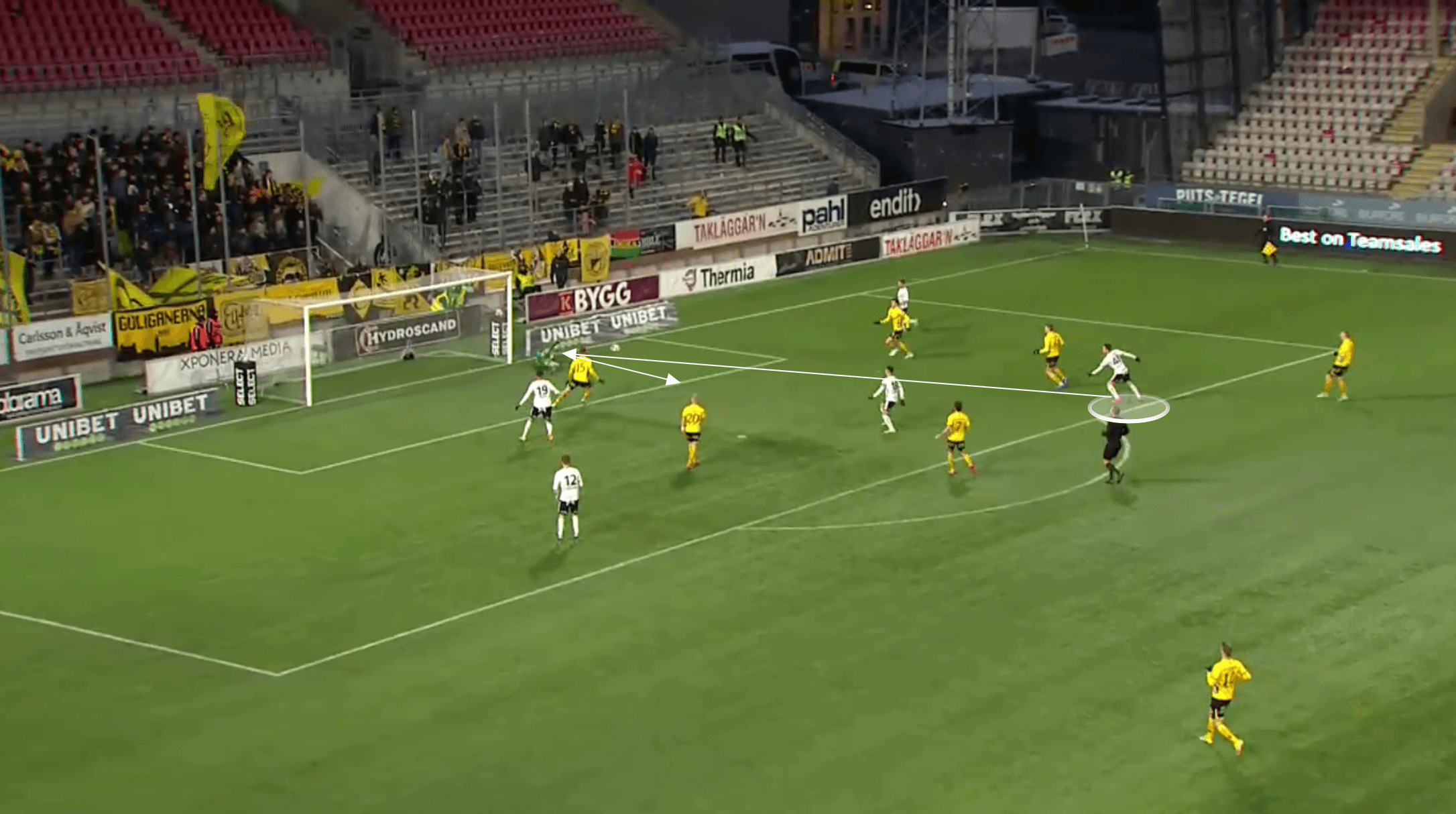
One common criticism of tall goalkeepers is that they lack the ability to get down either side of them and cover their bottom corners effectively.
Whilst this can be a lazy critique and isn’t true of all tall keepers, it is, unfortunately, an area of Rönning’s game that is evident.
It isn’t something that happens all the time, but too many of his conceded goals this season resulted from Rönning failing to amply get across his goal and make the stop down low.
We can see he has a good starting position in the following image and despite a centre-back being in front of him, he has a good sight of the ball.
He is positioned low enough, ready to react to the shot.
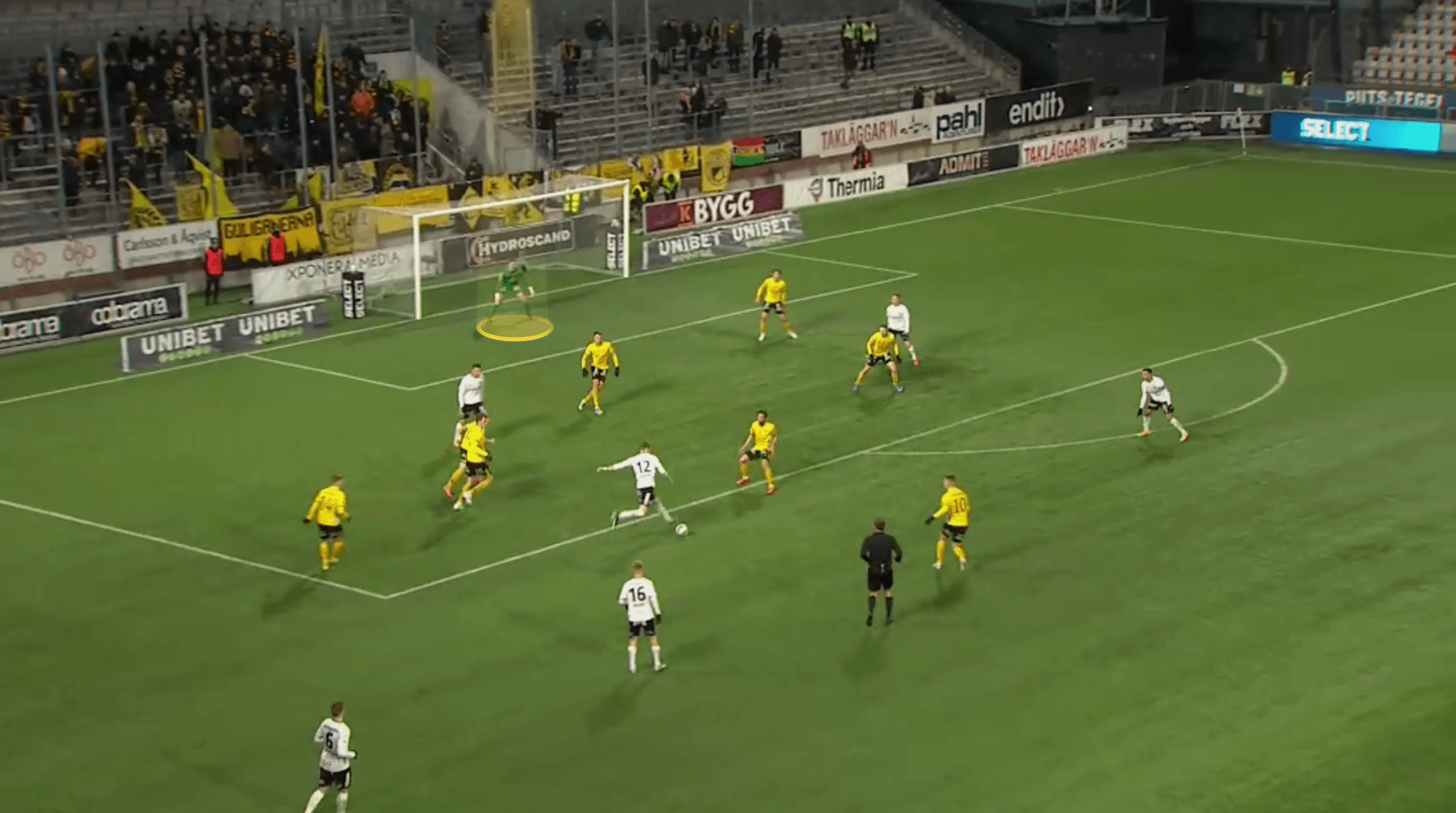
The ball goes past the centre-back and Rönning scurries across his goal.
However, he doesn’t step forward or dive forward, instead moving entirely laterally across his goal.
Therefore, he doesn’t reduce the distance between himself and the ball, and even if he does make the stop, his momentum is pushing himself across goal, rather than slightly forward where he could generate more power on the parry.
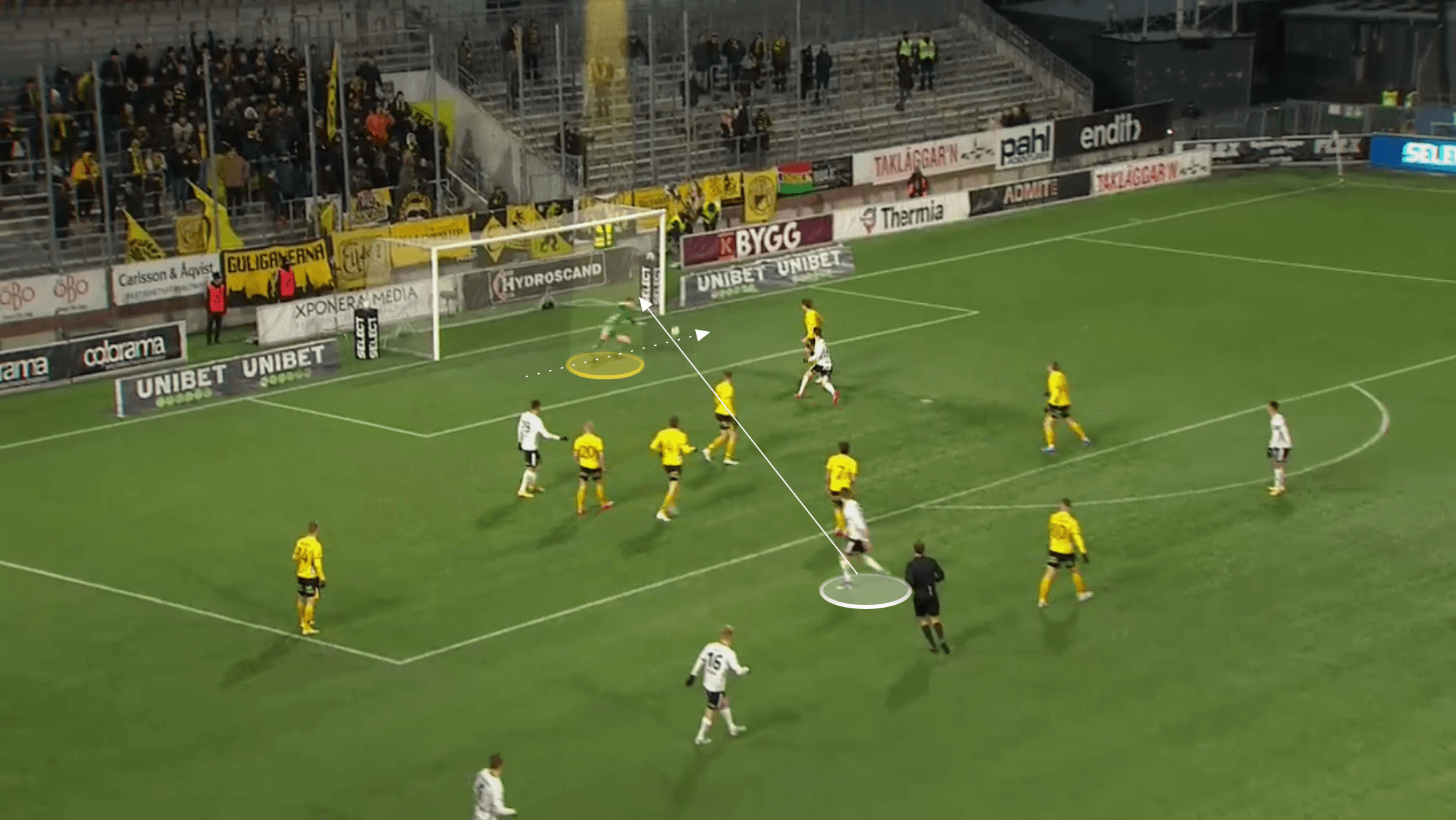
There is debate within goalkeeping on how a keeper should step across their goal.
A lot of coaches will say the lead leg should take a big step across and the other leg should follow across whilst others will argue the crossover step is quicker.
Rönning opts to get across his goal with the latter, but his crossover just isn’t quick enough.
This isn’t a technical issue but rather a speed issue, and he can struggle to get his large frame across the goal at a sufficiently explosive enough pace.
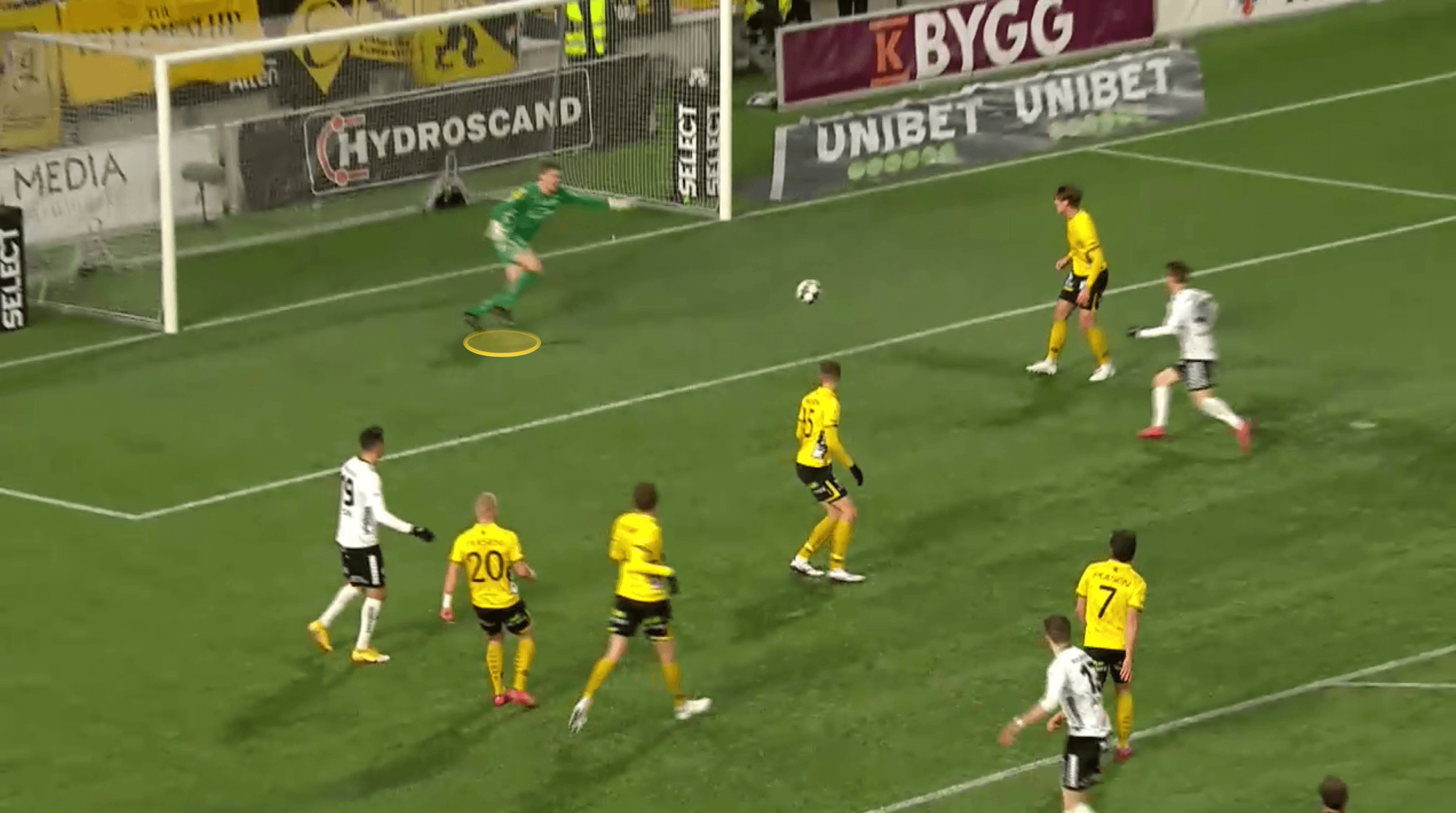
Exits / leaving his line
Rönning isn’t a sweeper-keeper.
He takes an initially reserved position, well inside his own box.
However, he is proactive and aggressive in stepping forward if necessary and consistently recognises the triggers to leave his line.
He doesn’t get stranded on his line and will close the gap if an opposition player gets through on goal.
He is brave in throwing himself to the feet of an opposition striker, and he creates an imposing presence as he does so, where a striker may pull out of the challenge as they catch Rönning diving towards their feet.
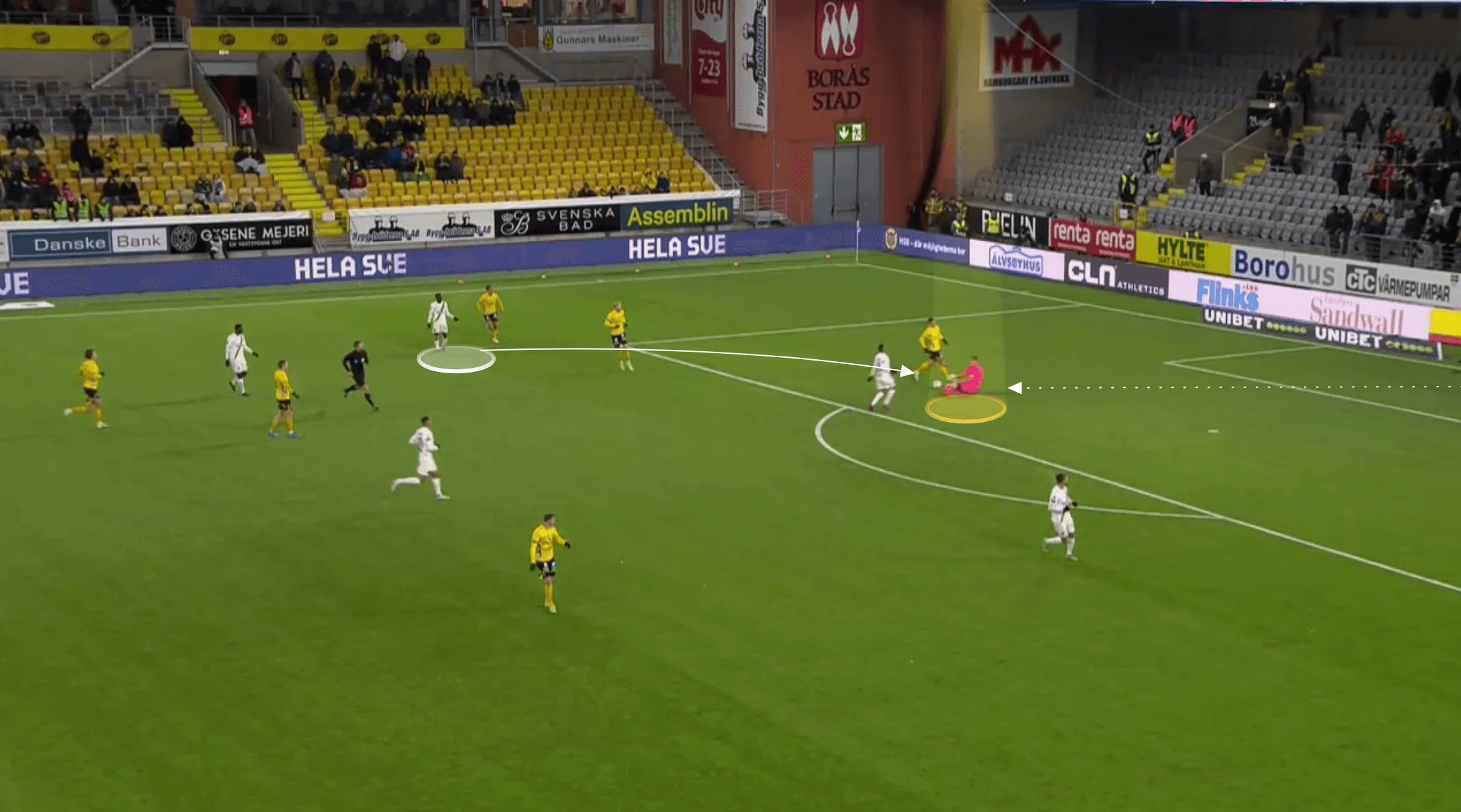
When a keeper is as tall as Rönning is, you expect them to be aerially dominant, and he doesn’t disappoint in this regard.
Teams tend to avoid putting too many crosses into the area when playing Elfsborg, or if they do, they certainly look to avoid putting them in the air or too close to the keeper.
Nevertheless, these crosses will still come into the area from time to time and Rönning is highly consistent with his performance in this aspect of his game.
He has an 87.5% win rate on aerial duels.
Rönning has a good spring in his leap on top of his height and this makes him a formidable opponent for opposition forwards to deal with when looking to get on the end of a cross.
Rönning times these jumps well, gets a knee up to protect his body if necessary, and regularly takes the ball at the peak of his jump.
He doesn’t get his hands up too early when looking to claim the cross.
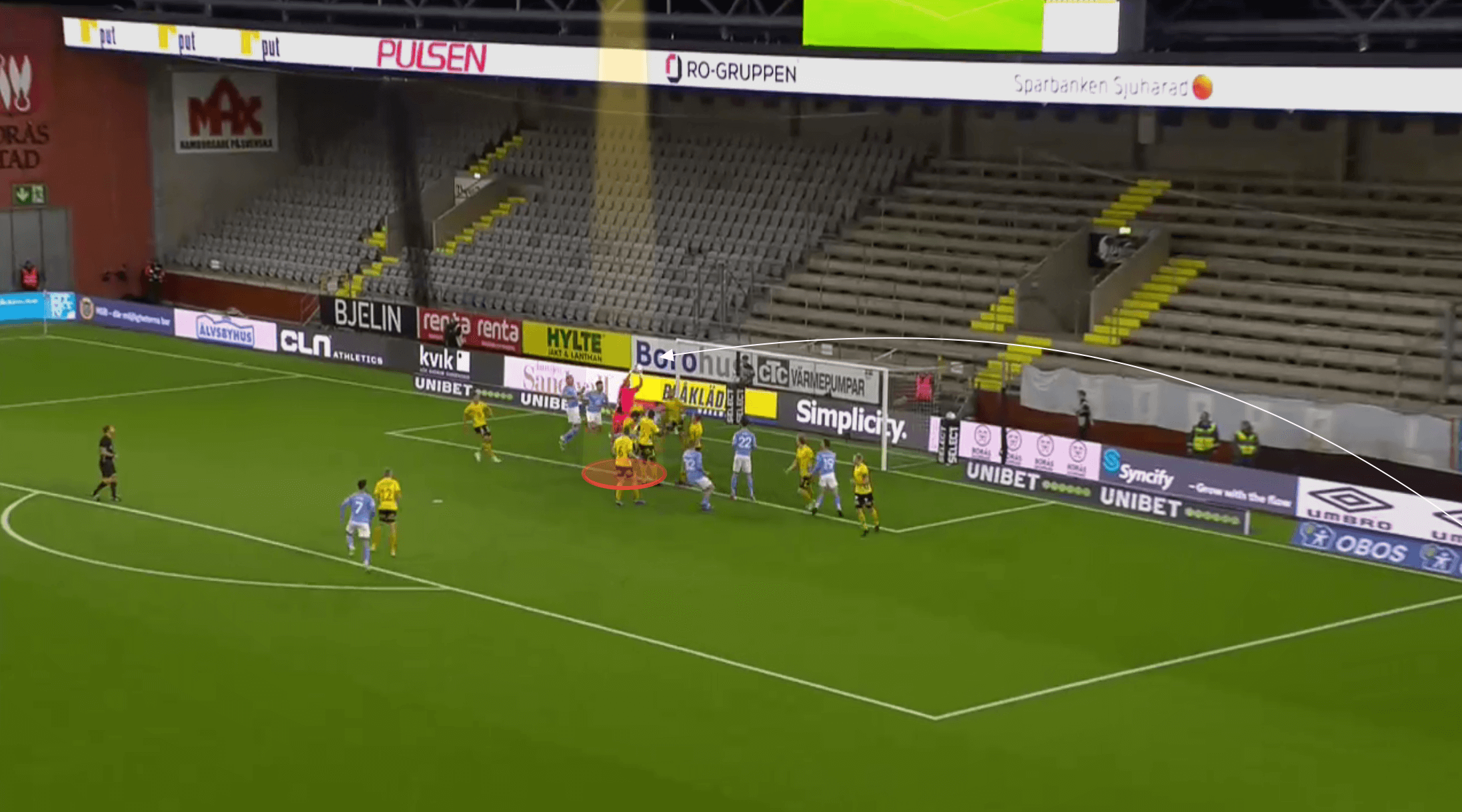
He is comfortable coming well off his line to claim crosses, and in doing so, the opposition are perturbed from delivering the ball into central positions in the box.
Depending on the weight of pass and flight of the ball, Rönning will come as far as his penalty spot to claim crosses.
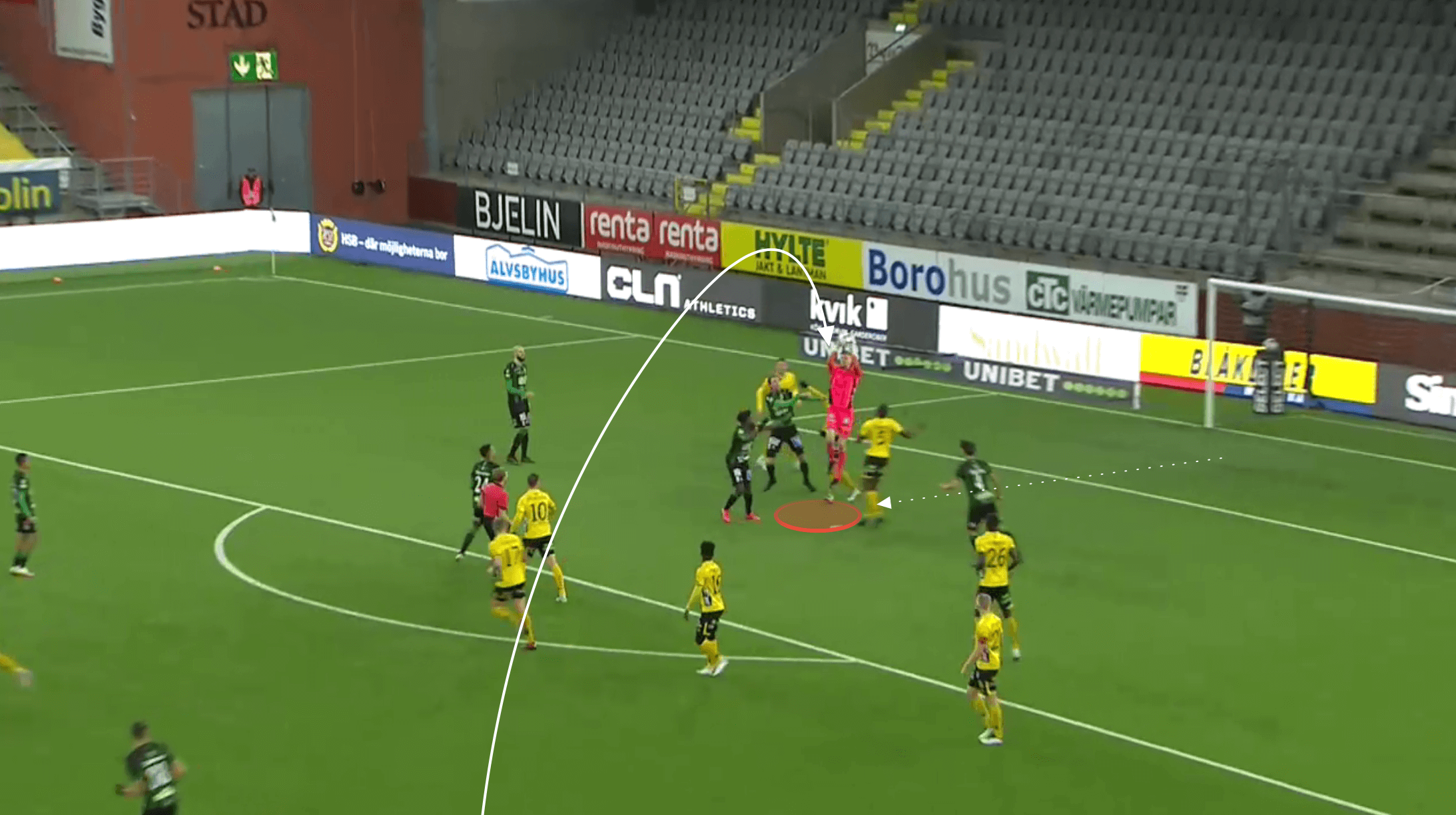
He judges whether or not he can catch the ball, and his decision-making is not only sensible but nearly always correct in this regard too.
Even if he can get two hands to the ball but isn’t comfortable with the pressure he is under, he has no qualms with punching the ball clear using both hands, and naturally, he gets excellent distance on any of these punches.
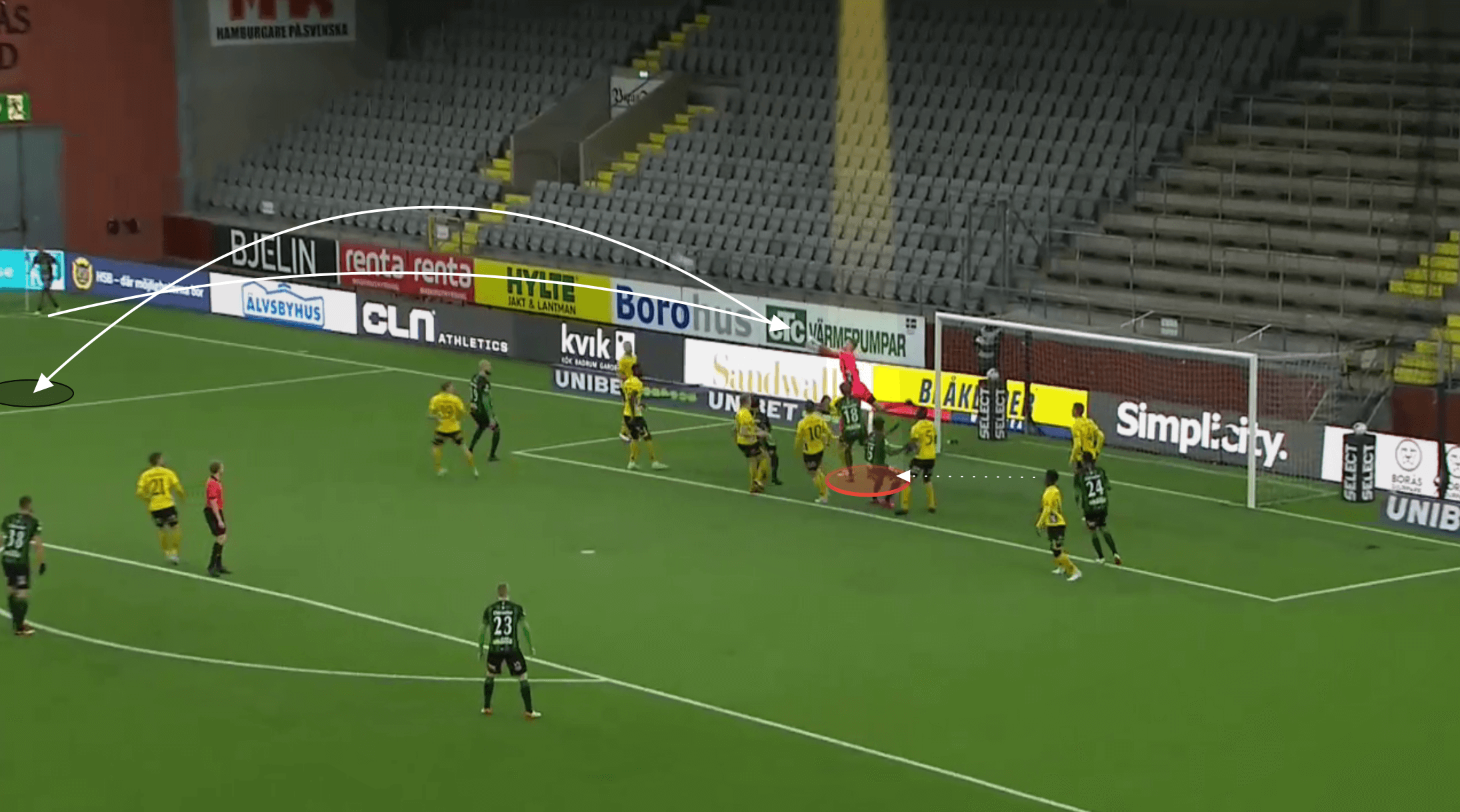
Yet, Rönning can still generate this kind of power and distance when leading with one hand.
Generally, when having to go with one hand, the keeper is having to severely reach for the ball and the contact isn’t always going to be strong.
However, as we can see from the next image, which shows Rönning diving laterally and at full reach to get to the cross, he is still able to clear the ball beyond the 18-yard box and, significantly, the opposition player lingering on the edge of the box ready to sweep up any scraps.
As a result, Rönning was able to successfully alleviate the pressure in this example despite only being able to get to this ball with one hand.
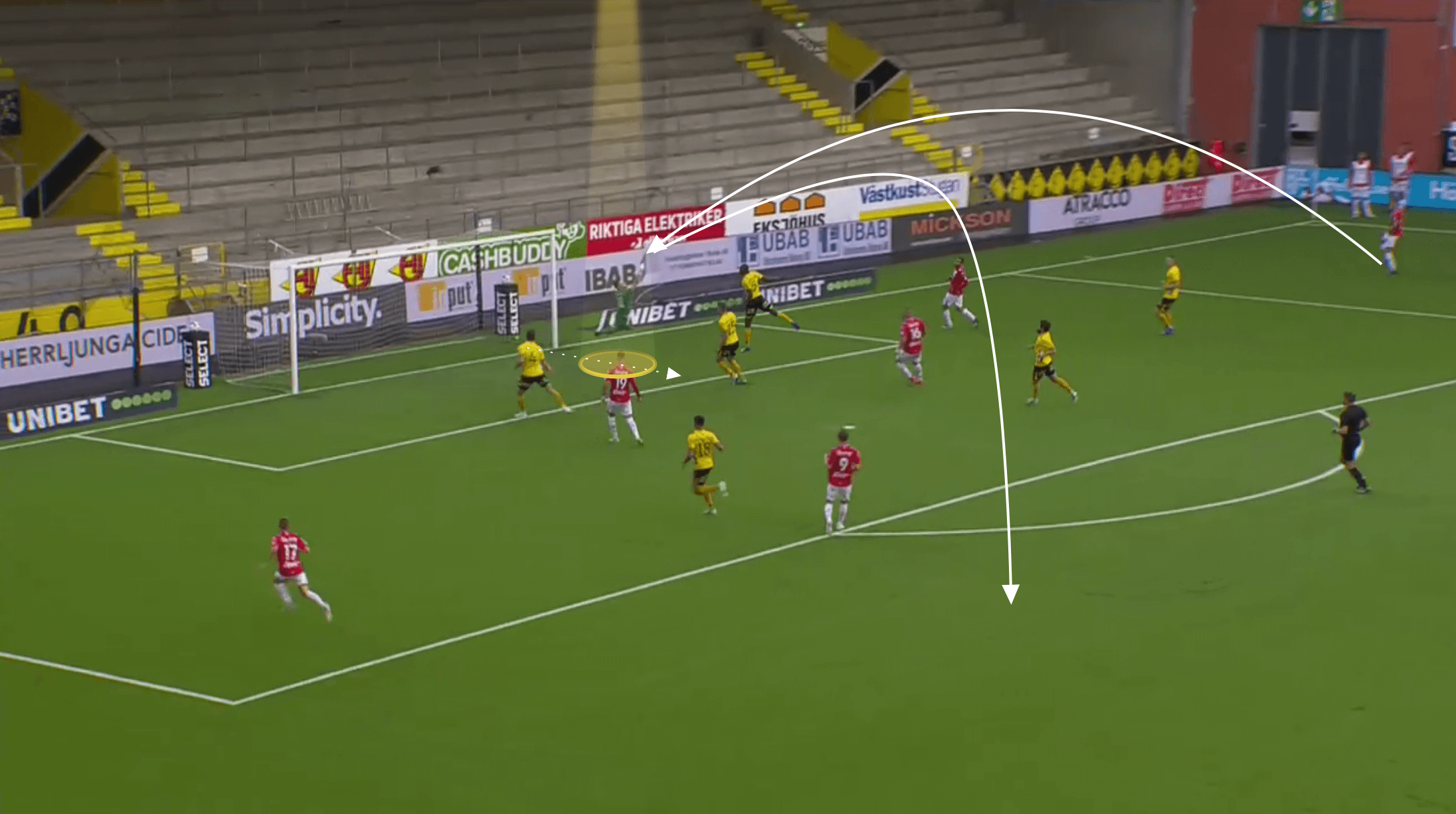
Distribution
Rönning has a pretty even split on goal kicks as to whether he plays short or long, but on average, over a 90-minute game, he plays 10.2 short passes, and is reliable in doing so, completing 97.4% of these.
Whilst many of these will be simple passes either side of him to centre-backs in plenty of space, Rönning still shows an ability, at times, to play a trickier pass and he can break lines.
We can see this in the following image where despite his left centre-back being wide open, he chooses to break the space between the two pressing opposition forwards and find his pivot instead with a first-time pass.
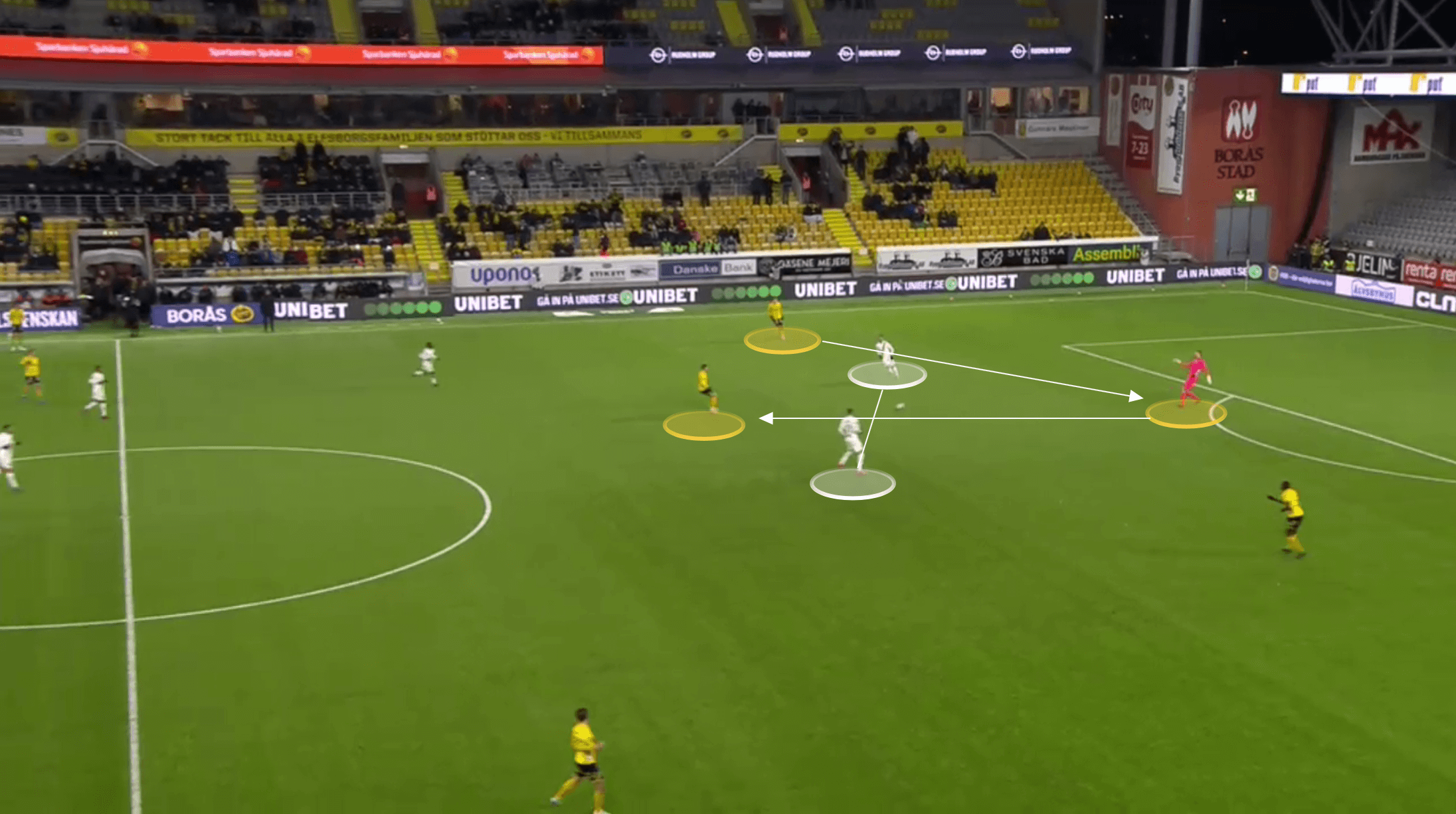
Rönning is a quality distributor over longer distances.
He generally exhibits strong technique although there is still the odd long pass that is mishit, and these tend to come when he looks to play the pass first-time, potentially as a result of being pressed.
Nevertheless, he can easily clip the ball into the midfield or out wide to a full-back or winger, as he can either drill the ball forward over a longer distance with a low trajectory into his centre-forward.
When looking to access the space behind the opposition backline, he shows impressive distance and can again drive this ball but also may choose to hang it, depending on the location of his attackers and the opposition defenders.
When going long, Rönning favours over-hitting the ball if necessary.
He had the third-longest long pass average of any keeper to play more than 500 minutes of football in the league.
This ability to hit these longer passes makes him a valuable player in a counter-attacking team.
Rönning can launch the ball from his hands without the need for a run-up and accurately hit the space well beyond the opposition backline.
Such a long pass from his hands led to the situation seen in the next image.
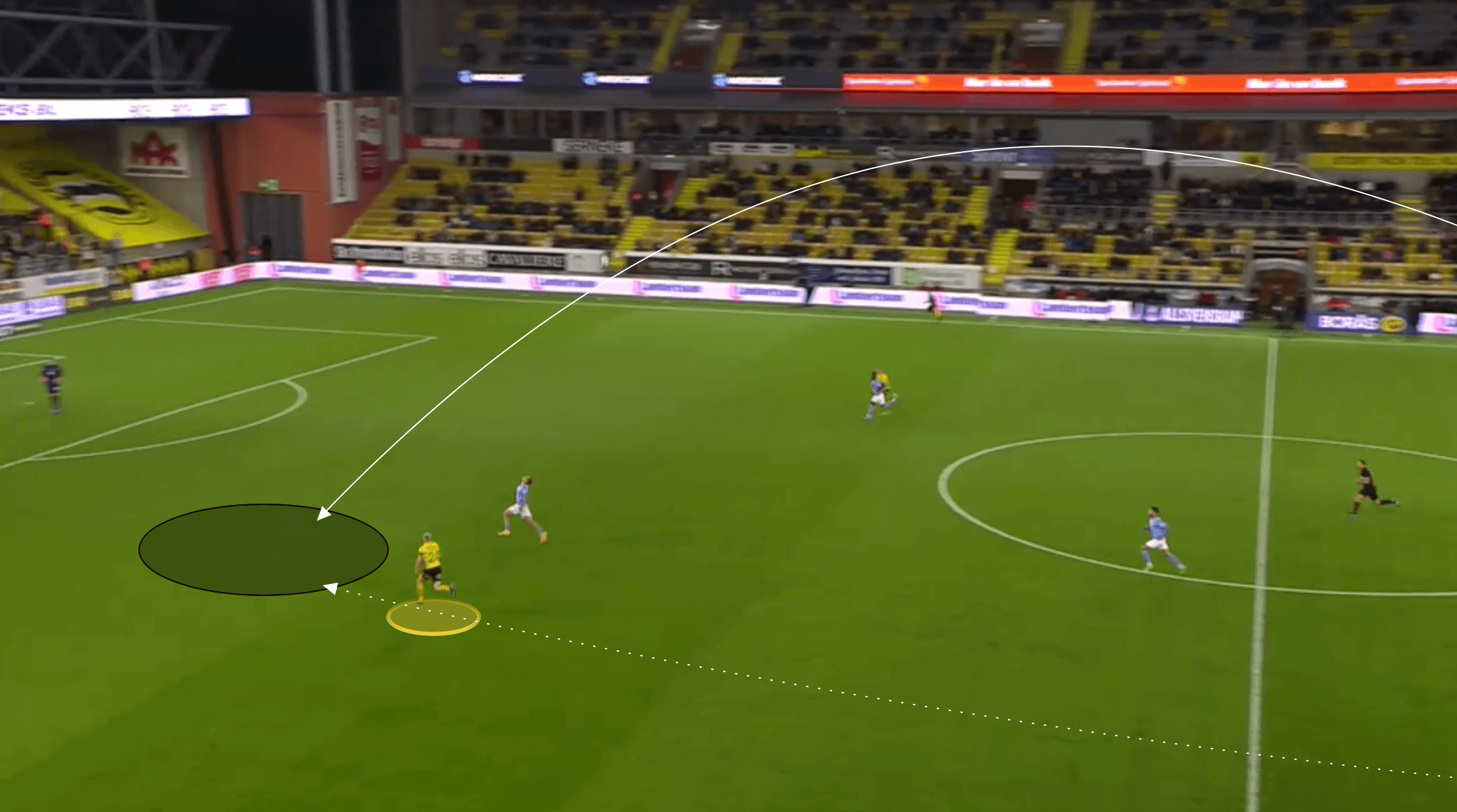
Rönning makes his decision on the ball quickly and also possesses a long and accurate throw.
He generates good power, following through as he throws the ball and can quickly launch the ball towards a teammate out wide — importantly throwing the ball in front of them to prevent them having to wait for the ball to arrive.
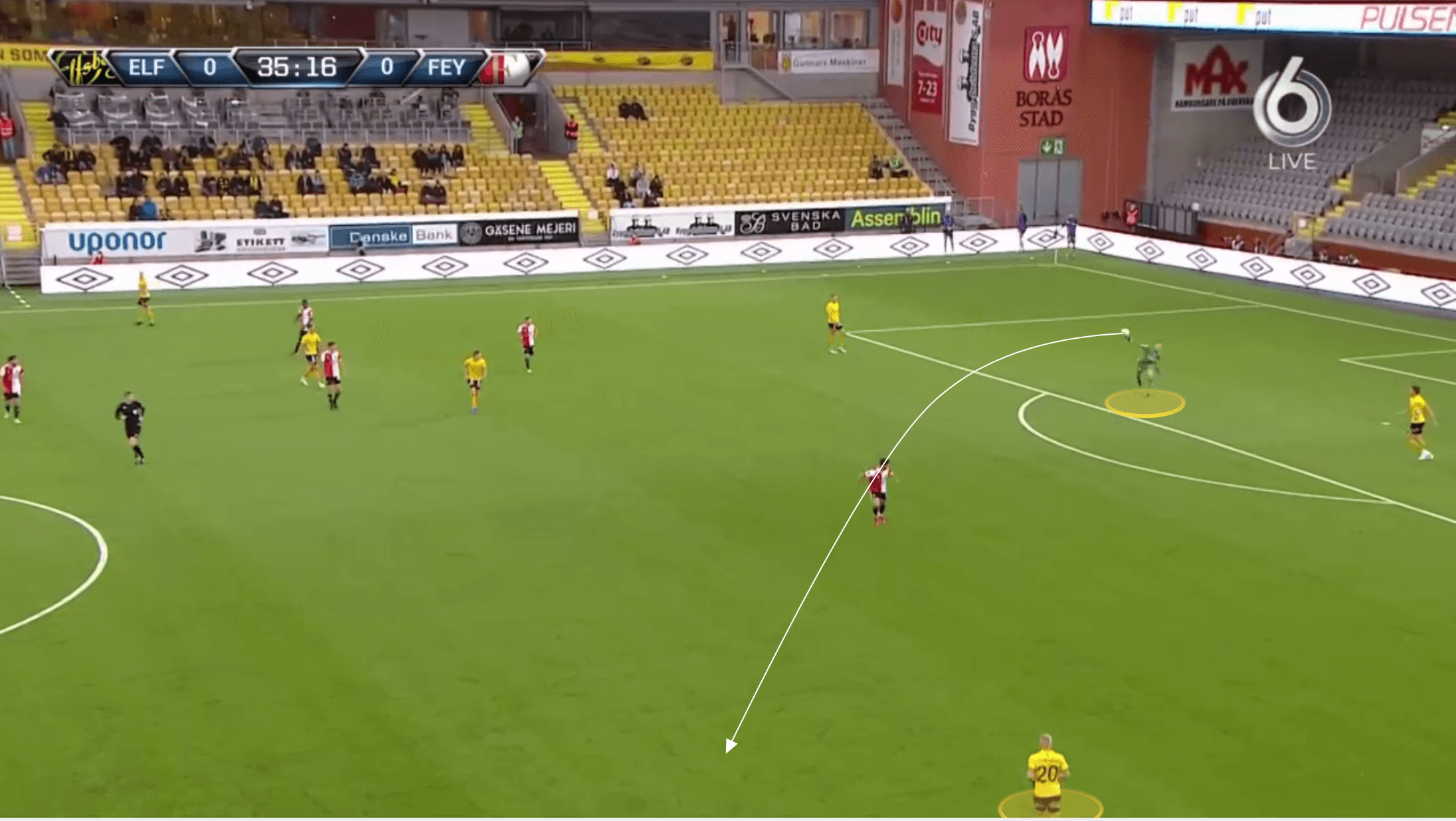
Conclusion
At 22 years of age, Rönning is obviously well off of his peak years, particularly for a goalkeeper, yet he is progressing nicely at a side that have played in Europe this season and finished fourth this season domestically.
With them just missing out on Europe for next season, Rönning may look to pursue his football elsewhere.
However, he is also in a place where he is the number one, playing at a good level, and developing away from the eye of Europe’s mainstream media, in his native Sweden.
He would be wise to develop further at Elfsborg for at least another season.
However, the signs are promising, and it would be surprising not to see Rönning grace one of Europe’s top five leagues sooner rather than later.
With him not being a sweeper-keeper and having particularly good long-distance kicking whilst showing a talent for claiming any aerial balls, Rönning is likely to fit in well at a side in the Premier League or Germany, particularly one that doesn’t value everything going through their keeper in possession, rather than for a team in La Liga per se.
Unfortunately, due to work permit rules, until he is a fully-fledged international, it is unlikely he will be able to play in England, but the Bundesliga is a very real option for him.
Elfsborg averaged just 46% possession this season, yet still played the highest volume of long balls per 90 in the league.
Bochum, Union Berlin, and Freiburg are names that spring to mind from the Bundesliga where he may be a good fit in the future.
If he can work on some minor details, like the direction of his parrying and his ability to consistently cover his bottom corners, Rönning has the potential to be a keeper of the highest level.





Comments